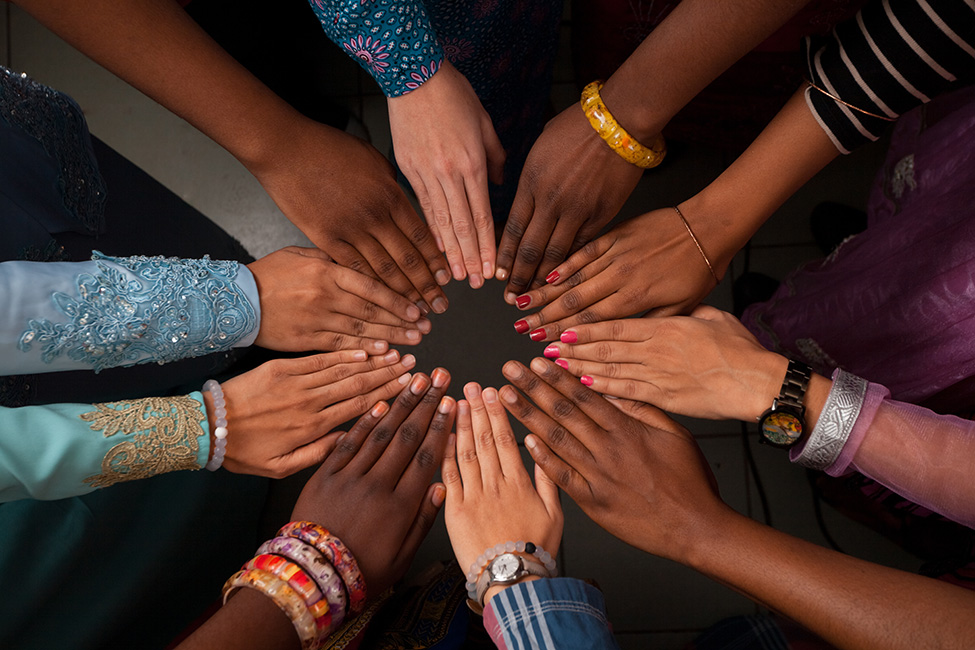
“Let’s Make Youth Work a Field” is the title of my first Youth Today commentary, published almost thirty years ago in Fall 1992. Two years later, I signed on as a regular columnist, starting a twenty-year stint that earned me minor celebrity status as “the godmother of youth development.” More importantly, the regular column gave me the opportunity to challenge practitioners to think of themselves as youth developers, not just activity supervisors or caregivers.
I am incredibly excited to announce my return to my volunteer post as monthly field-building columnist in January 2022. True to the mission of Changing the Odds Remix, I will be using these columns to reflect on the last month’s stories and remix them with current and historic happenings and archived stories and columns from the field.
I believe that we have an unprecedented opportunity to move a national youth agenda, undergirded by the science of learning and development, that prioritizes equity, catalyzes system and sector partnerships, redefines success, and empowers the youth fields’ workforce. But I believed this 30 years ago.
Read the original 1992 article. Then, read my reactions to rereading it in a point-counterpoint interview with myself 30 years later (present me is in italics).

YT ’92: There is an unprecedented opportunity to move a national youth agenda that has development, rather than deterrence, as its base. Frustration with two decades of fragmented policies and programs aimed at reducing youth problems has peaked. I sense a willingness, even an eagerness, to embrace a new philosophy.
Q: Do [you] always talk about unprecedented opportunities?
A: No. But I have spent the past two years talking about the “unprecedented opportunity” presented by COVID-19, racial reckoning, and the influx of federal AARP funding. In 1992, the breakthrough opportunities were with the youth-risk fields. Research was beginning to confirm that positive youth development (an asset-based approach to addressing problems such as teen pregnancy, delinquency, substance abuse) was as effective if not more effective than traditional approaches focused narrowly on problem-prevention and treatment. The unprecedented opportunity we have today is with the K-12 education leaders who didn’t fully buy into the PYD movement the first time around.
YT ’92. The new philosophy of youth development has three basic tenets: First, problem-free does not mean fully prepared — preventing high-risk behaviors is not enough… Second, academic skills are not enough — young people are engaged in the development of a full range of competencies (social, vocational, civic, health). Third, competence, in and of itself is not enough. Skill building is best achieved when young people are confident of their abilities, contacts, and resources…
Q: Why do you think education leaders are more ready to embrace these tenets today than 30 years ago?
The first tenet — “problem-free isn’t fully prepared” — was picked up quickly with youth-services professionals. It validated their intuitive understanding that their success with “at risk” youth was often more closely linked to their ability to build relationships and tap youths’ strengths than it was to the official targeted training or services associated with their funding. The tenet resonated with K-12 educators as well. It affirmed why they were in education. The second tenet — “academic competence isn’t enough” — is where we lost many education leaders, except for those who were experimenting around the margins. The SEL movement got the other competencies inside the school building. Change was happening (e.g., the call to integrate social, emotional and academic development), but it took COVID-19 to push (or allow) educators to acknowledge the centrality of the third tenet — the power of belonging and relationship building.
YT ’92: …the tenets of youth work should inform this national agenda as it emerges. Most important, the leaders of youth work should be pushing this agenda. But where are the leaders? Where is the shared vision? The political platform?
Q: Is there at least a broader base of leaders asking these questions?
Yes. The base has broadened to include K-12 leaders, policy makers, youth system-reform advocates and funders. We have better language (e.g., whole child, learner-centered, youth thriving, ecosystems) We have much better evidence (e.g., the Promise of Adolescence (NAS)). But we haven’t done the hard work that’s needed to really get beyond a shared platitude. The political platforms we can agree on are bounded by time or topic because we haven’t made the hard investments needed to get leaders from different systems and sectors to think deeply enough about how their system-focused decisions affect other systems and, equally important, impact the broader ecosystems youth and families navigate.
YT ’92: What is youth work? I have heard it defined so broadly that it is rendered meaningless… I have heard it linked completely to the nonprofit sector or, like social work, described as a profession whose members can be found in multiple work settings…. Who are youth workers? …Does the famous two-line phrase really have a third line: Those who can, do; those who can’t teach; those who can’t teach become youth workers?
Q: Have we at least answered these questions?
Not yet. But we will this year. The Youth Fields Workforce Survey is a Readiness Project led by a co-operative of policy, practice and research organizations. The survey “will fuel practice improvements, policy advancements, and knowledge-building research in our field. The information will help us define the youth fields workforce, prioritize efforts to recognize their assets and needs and act upon their perspectives, and ultimately support them and their continuing work to ensure all young people have opportunities to thrive.” The co-operative defines the youth fields’ workforce as “community center staff, childcare providers, mentors, coaches, afterschool professionals, summer camp counselors, teaching artists, young adult librarians, science program facilitators, youth volunteer coordinators, wilderness guides, and many others.”
YT ’92: …It is time for youth work to become a field. Time to articulate the value and purpose of youth work, the outcomes associate with it, and the specific practices and philosophies that define it… Most important, it is time for both youth organizations and workers to define their role with more formal institutions that engage young people.
Q: Do you still agree with this statement?
I’m even more adamant about this than I was 30 years ago. The survey’s co-operative describes youth workers as “THE key lever in supporting youth. They facilitate high quality programming, build sustained relationships that benefit youth, and support young people’s experiences in learning and development.” The out-of-time school field has done an incredible job pushing for the professionalization of the OST workforce and the sustainability and expansion of OST programs. But this has been done, in some cases, in a way that suggests that staff or systems that teach or treat as a priority cannot do youth work. Every system has staff who have the time, temperament and sometimes the training needed to do relationship-driven youth work. We will miss a huge opportunity to galvanize the workforce if we continue to equate fields with the systems. The differences between the opportunities for relationship and identity building in clubrooms, classrooms and clinics are differences of design and degree. Basic staff practices and priorities reflect system-level policies and accountability structures. Strong field identity can empower staff to optimize practices, even within these constraints.
YT ’92: …The public knows that there are ineffective schools and teachers because they have been given assessment standards and examples. If the public is to understand that there are competencies beyond education that can and should be developed and that there are people and institutions beyond teachers and schools that are needed to spark and sustain this development, then youth work has to step out of the shadows.
Q: Would you make any modifications to this one?
Yes. The public knows there are ineffective schools and teachers, but it is not solely because they have been given assessment standards and examples. It is because they have observed their children and assessed their progress against their own expectations. What we have learned from parent surveys is that parents, when they have the means, assess youth programs that conform with their expectations about what active learning and engagement looks like and select ones that best fit their children’s interests, strengths and needs. What we have an opportunity to do is develop common assessments of learning settings that cluster by characteristics (e.g., sports, STEM, academics, outdoor challenges) rather than systems.
YT ’92: I have been told by people who consider themselves youth workers that they make a difference because they care. There has to be a way to define this “caring” so that it can be recognized, assessed, taught and sustained.
Q: Is caring still a priority?
A: Now more than ever. This may be the issue that pushes teachers to their limit as they struggle to balance caring with content delivery. And it is the issue on which youth organizations scored points during the pandemic. Again — the opportunity we have is to broaden our definition of what and who constitutes the “essential youth fields workforce.”
YT ’92: If youth workers are to benefit from today’s political climate, four tasks must be done. First, articulate the outcomes that come from that caring — confidence, competence, commitment, compassion — commonly stated goals found in the literature of many organizations. Second, define the inputs that combine to constitute caring — nurturing, healing, empowering, and pushing (developing full potential). Third, outline the skills, competencies, attitudes, and knowledge needed to assure that a youth worker can offer these inputs consistently. Fourth, define the organizational characteristics that are supportive of youth work — the specific missions, structures, staffing, policies, and practices that are supportive of those who choose to work with young people.
I am (still) convinced there are lessons to be confided, synthesized, and disseminated. Let’s go to work. (Amen.)
Strong fields are not built on commentary and podcasts alone. That is why I am equality excited to announce a formal partnership between Youth Today and KP Catalysts (the engine behind Changing the Odds Remix).
We see Youth Today as a critical partners in our work to accelerate the rate at which leaders transform Knowledge into Power to change the odds that all children and youth will thrive. The KP Catalysts team will work with the Center for Sustainable Journalism, the publisher of Youth Today to:
- Engage additional columnists from across the allied youth fields
- Launch a field facing advisory group
- Amplify Youth Today articles and columns
- Build capacity for Youth Today as the allied youth fields’ key source of current field news




No comment yet, add your voice below!